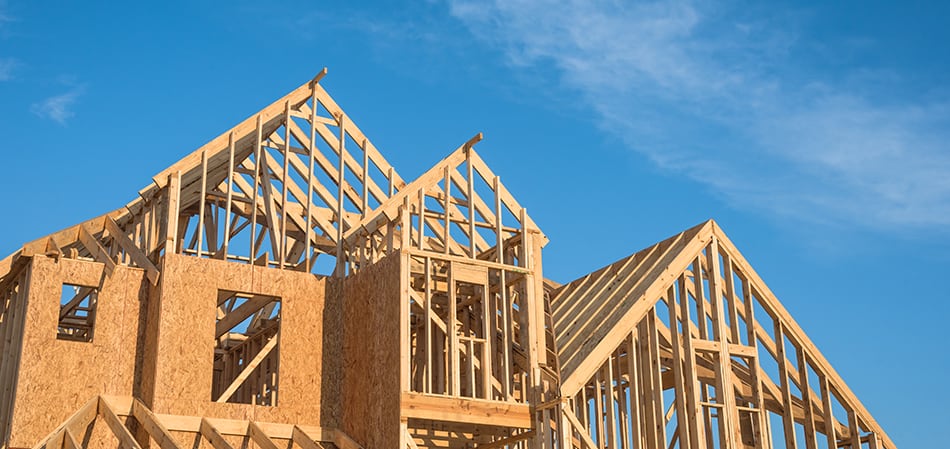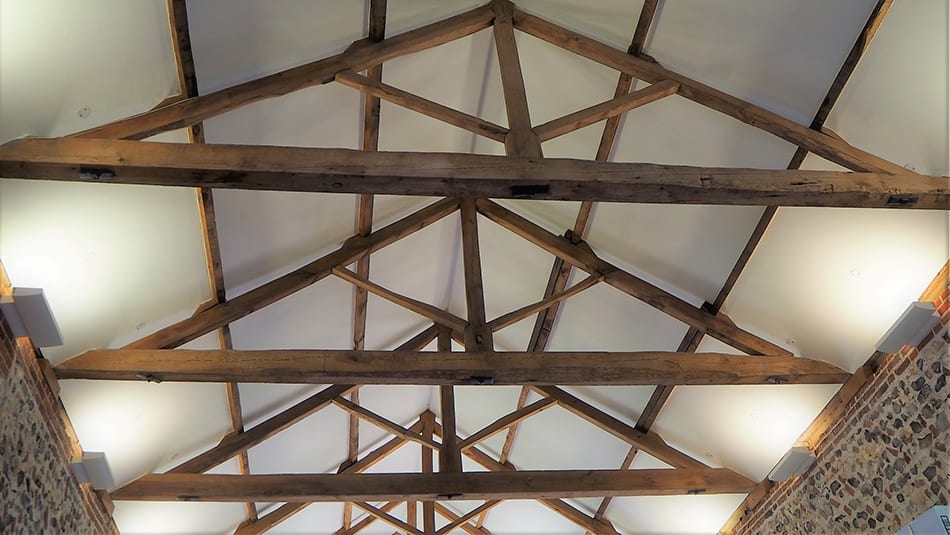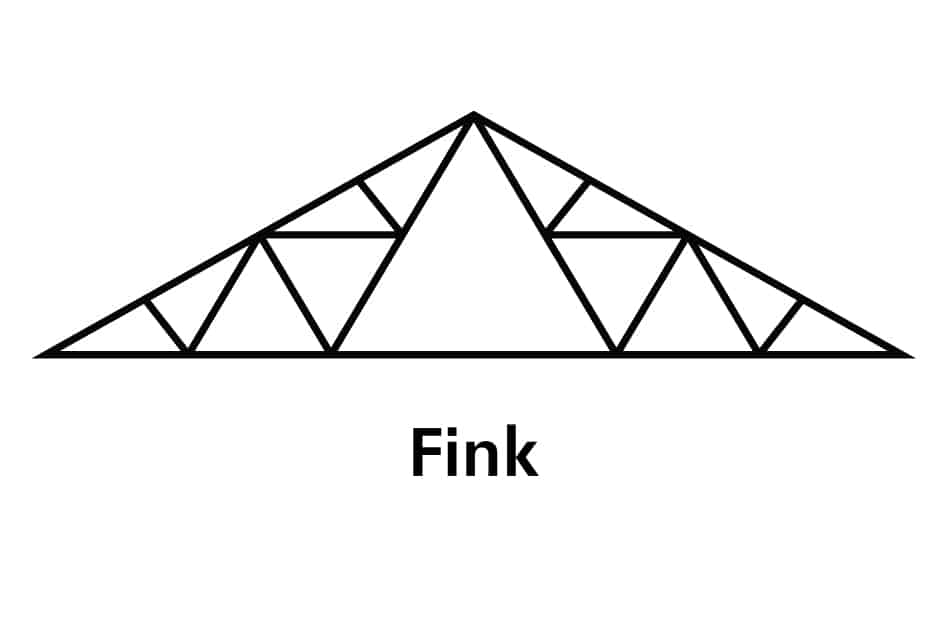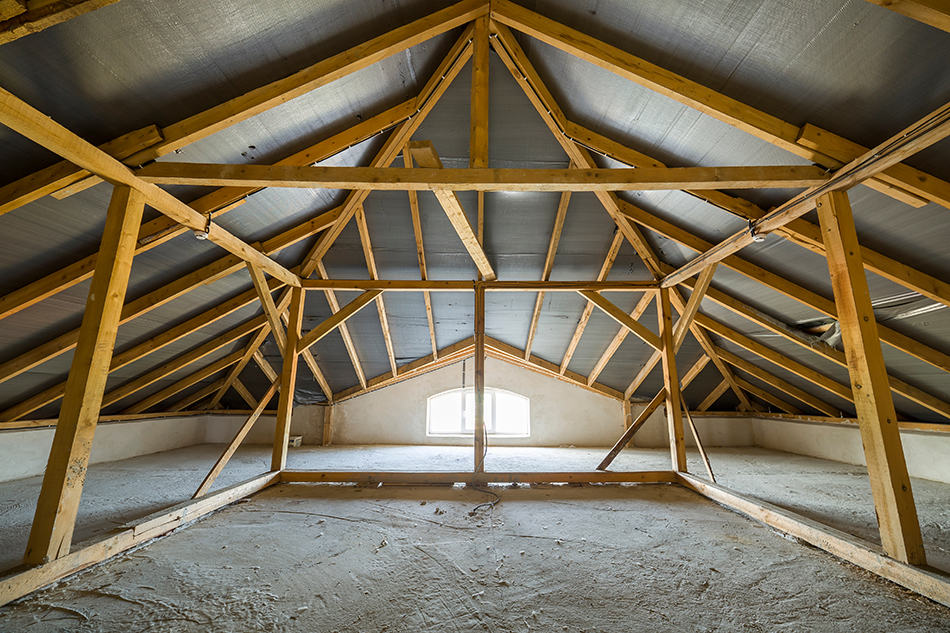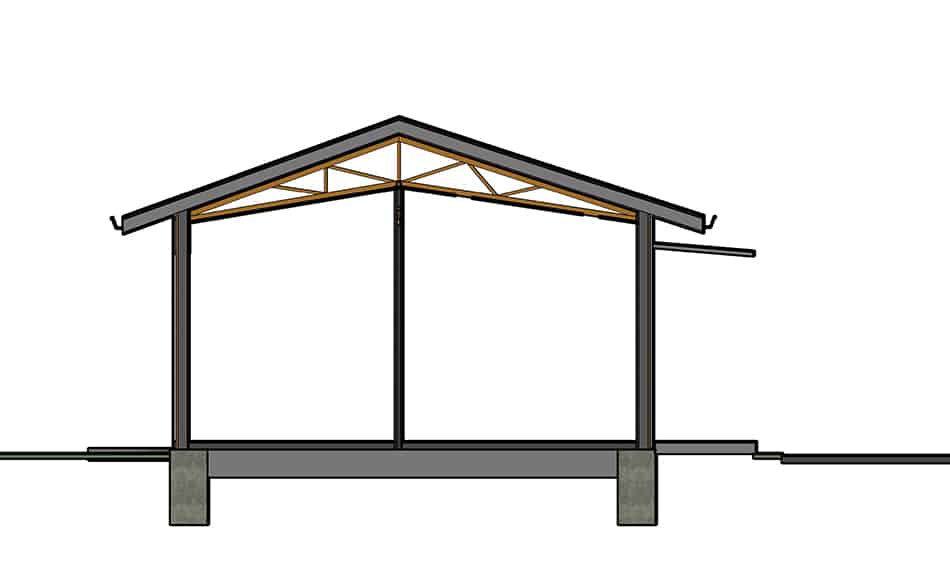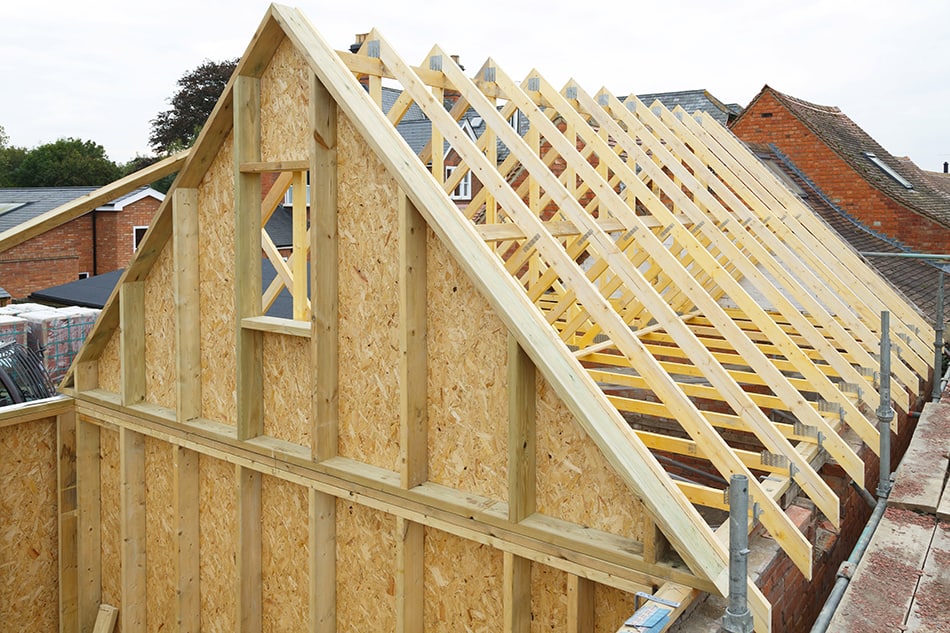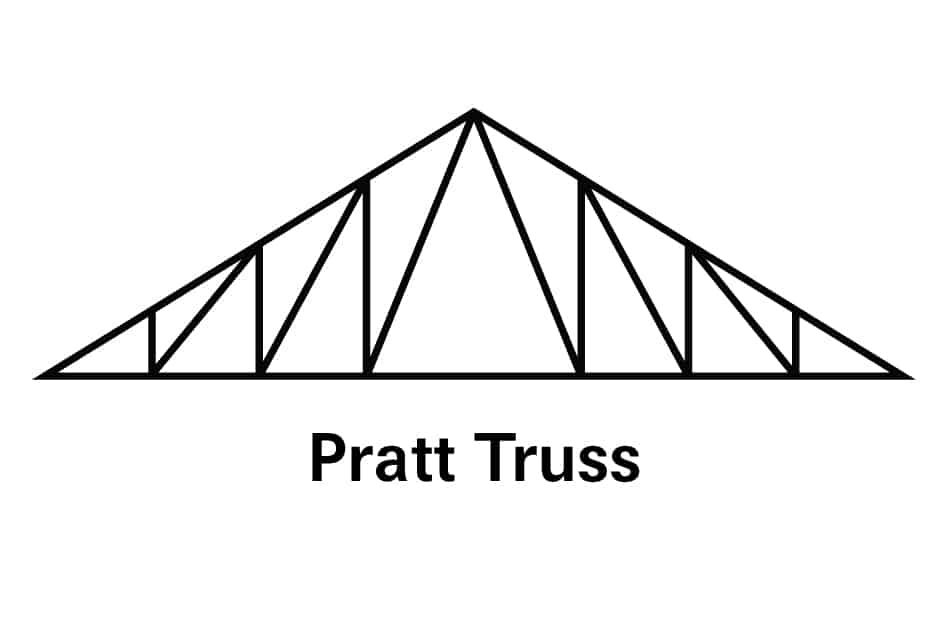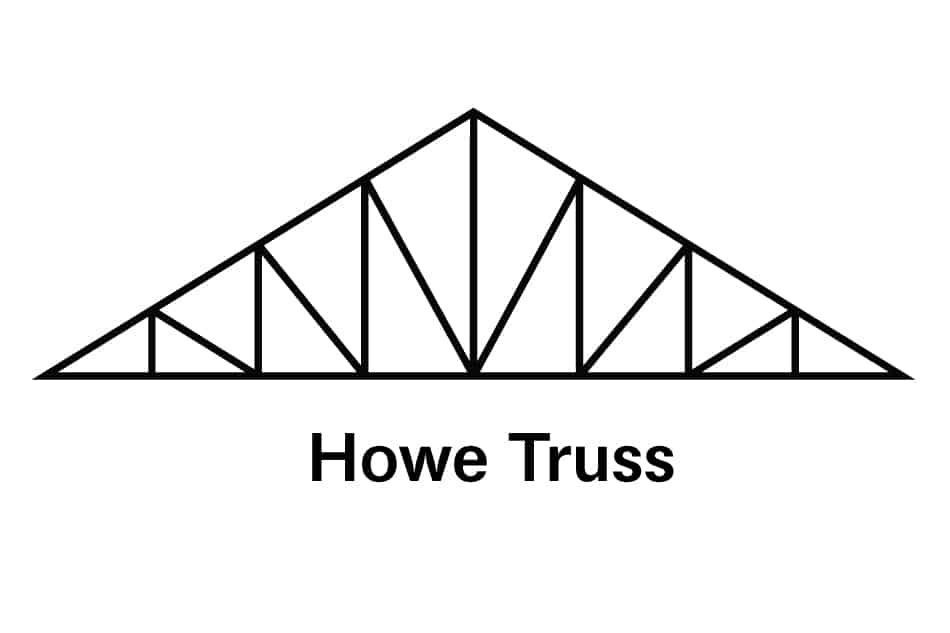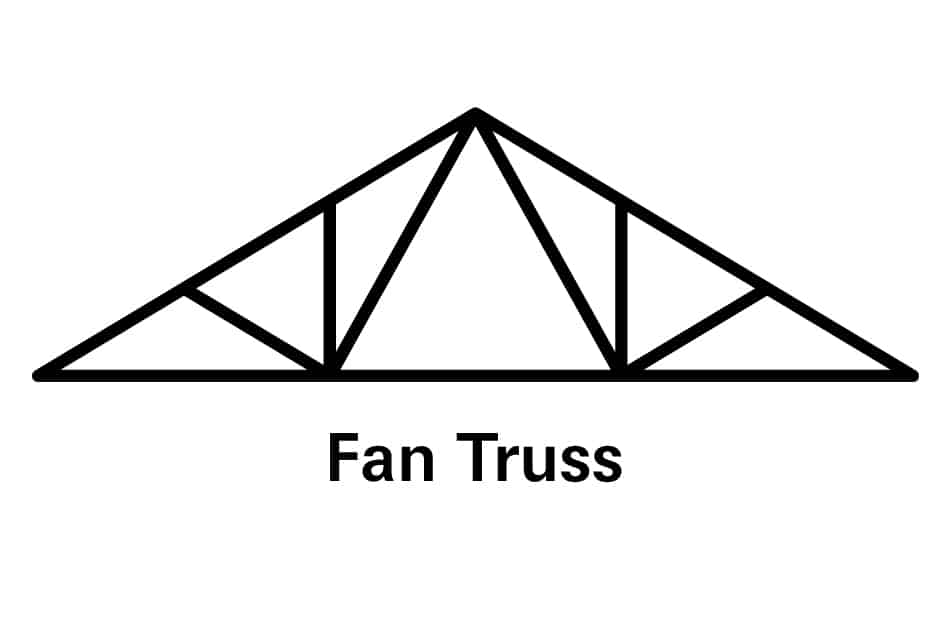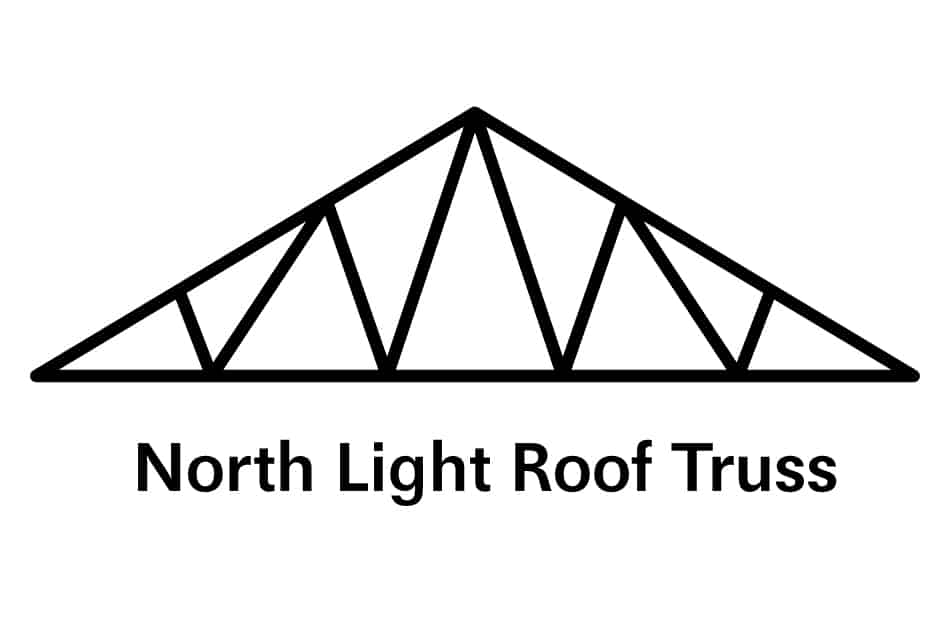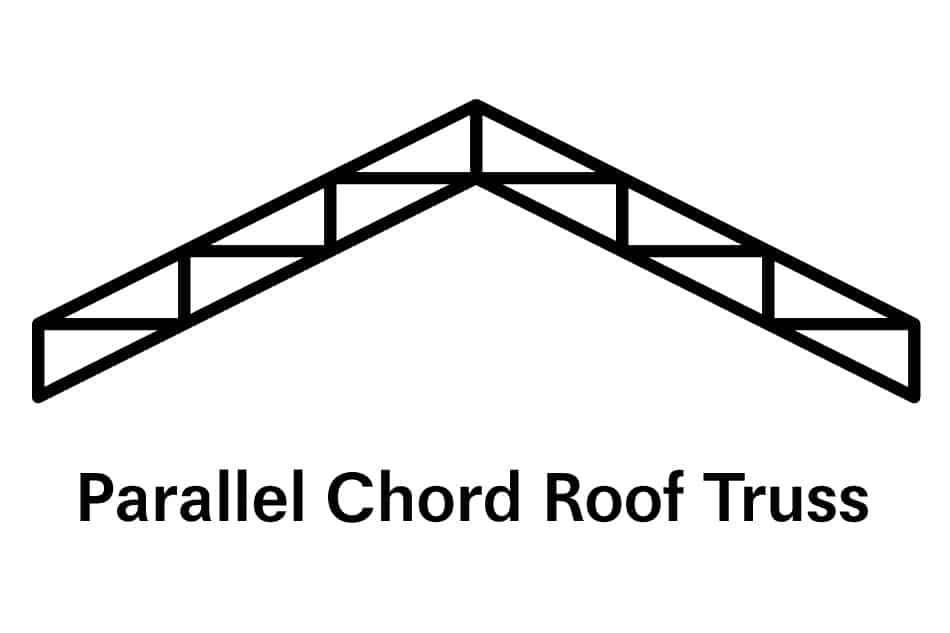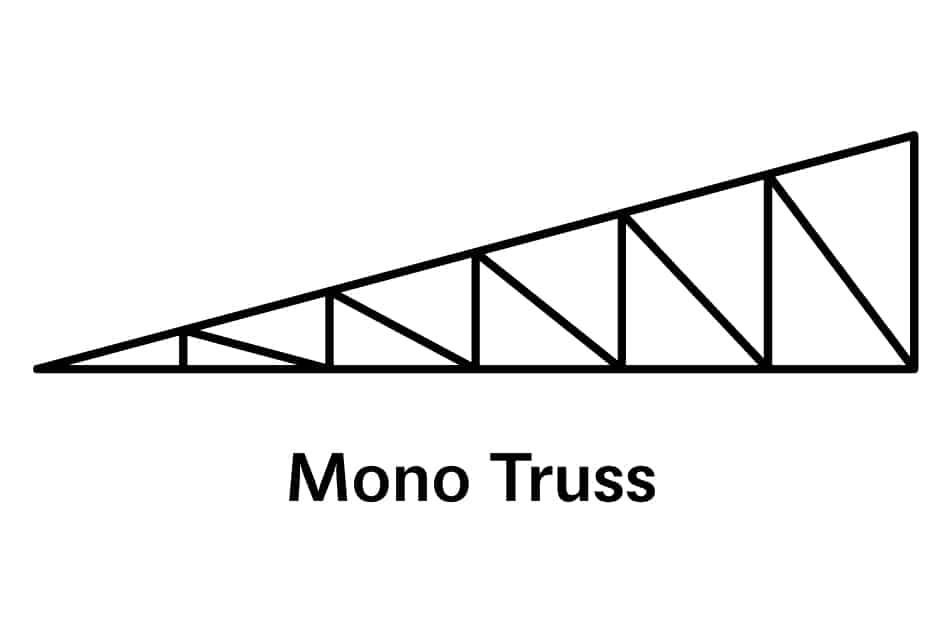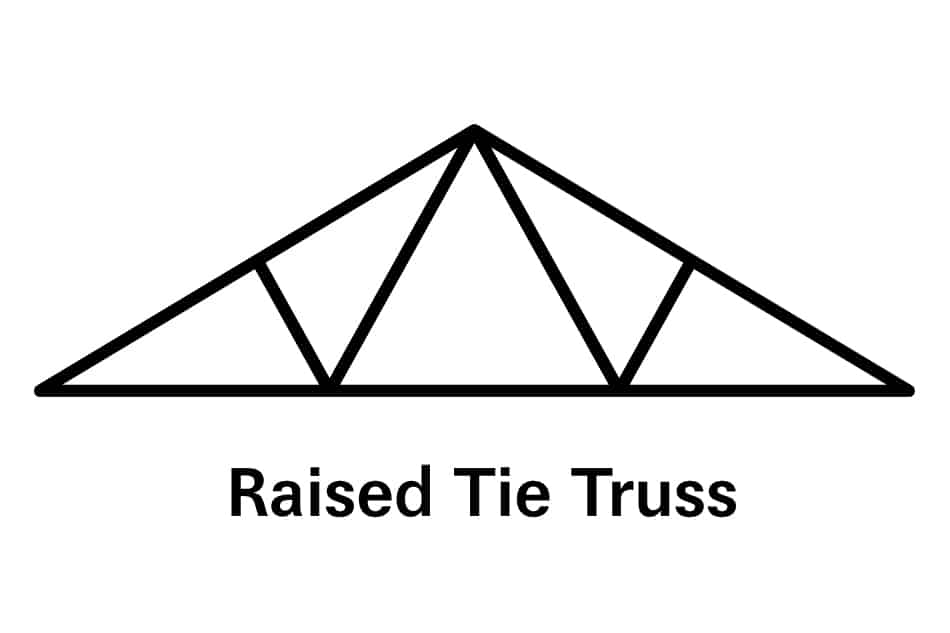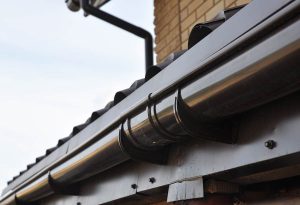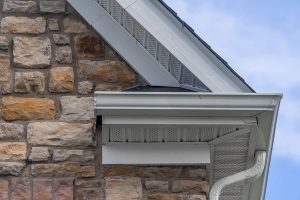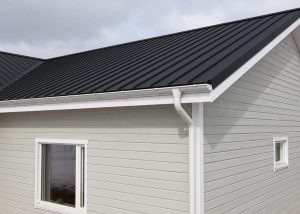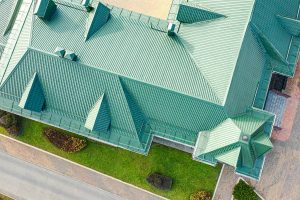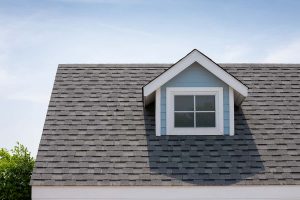A roof truss is a popular frame for your roof. Aside from being flexible, it is also affordable and easy to install. Plus, it uses less timber compared to the traditional cut roof.
Keep in mind that despite sharing some major parts, not all roof trusses are the same because they come in various types, sizes, and shapes. For this reason, choosing the best type of roof truss for your home or building can be quite challenging.
Additionally, you also have to consider several factors, such as functionality and design, to ensure that you’re picking the right roof truss. To help you in your search, here is a list of the different types of roof trusses, along with their most common uses.
King Post Truss
A King Post Truss is a basic type of truss, and it has the least amount of truss members, which include a bottom chord, two top chords, a central vertical post (king post), and two webbing chords.
Because a king post truss has a simple design, it comes at an affordable price. However, it can not span long distances. To be specific, it can only span up to five to eight meters, making it a suitable roof truss for small houses or projects.
Aside from that, the simple design of this roof truss will not make your roof look beautiful. Still, it can be a great choice for a garage or shed.
Queen Post Truss
Like the king post truss, a queen post truss has a simple design. The difference between the two is the number of vertical posts. To be specific, a queen post truss has two vertical posts while a king post has one. Because of its additional post, a queen post truss has a greater span, specifically about eight to twelve meters. As such, this type of roof truss can be used for larger projects.
Aside from that feature, a queen post truss is also lightweight. Unfortunately, it is a bit expensive compared to a king post truss. Lastly, you can use this type of roof truss for constructing residential homes.
Fink Truss
A lot of residential homes use a fink truss due to its flexibility. Aside from that, it also spans to up to 14 meters, making it a cost-effective roof truss. Because it can span far distances, it is also suitable for large projects, including pedestrian buildings and homes.
For its appearance, a fink truss has a W-shaped webbing. This feature allows this type of roof truss to carry a great load. Additionally, the position of the webbing allows it to provide additional storage space. Lastly, this type of roof truss can also be used as support for other roof trusses if you double the number of plies.
Attic Truss
One of the downsides of a lot of trusses is that their webbing can limit attic space. The good news is that you can opt for an attic truss if you’re looking for additional living space or storage.
An attic truss has a similar appearance to a queen post truss. The only difference is that the two vertical posts are apart from each other to provide attic space. Always remember that the wide the structure of the building, the bigger its attic space. Additionally, the ceiling will be higher as the roof pitch becomes steeper. Lastly, an attic truss can span up to 25 meters.
Scissor Truss
A scissor truss is commonly used in cathedral ceilings and vaulted ceilings. Compared to other roof trusses, the bottom chords of this roof truss are sloped instead of horizontal. As a result, it creates an aesthetically pleasing ceiling in the room below.
A great advantage of choosing a scissor truss is that it combines the convenience and speed of using pre-engineered trusses while still providing the aesthetic benefit of a high ceiling.
Aside from that, you can also install this type of roof truss in a certain area of your home and use other types of roof truss in other parts of the house where you don’t want high ceilings. The result is that your roof will look uniform from the outside, even if one area of your home has a vaulted ceiling.
A scissor truss is one of the best types of roof trusses. However, it is more expensive than its counterparts.
Gable Truss
Typically, a gable truss is used along with other types of roof trusses, and it serves as the roof’s “end cap.” Aside from that, his type of roof truss is built on each end of the roof frame to support roof sheeting.
The truss members of a gable truss include multiple vertical posts, a bottom chord, and two top chords. As for its span, it varies depending on the design of the roof. Lastly, this type of truss cost about 25% to 50% more compared to other standard-style trusses.
Pratt Truss
In 1844, Caleb and Thomas Pratt invented a type of roof truss known today as the Pratt truss. It has vertical and diagonal members that form a slope outward from the center. Additionally, the vertical posts provide tension, while the diagonal posts bring compression.
Overall, a Pratt truss is one of the most popular types of steel roof trusses because it is economical. Plus, it can cover lengths between six to 10 meters. As such, you can use this roof truss if your home is within the range.
Howe Truss
The Howe truss was introduced by William Howe. Its design is similar to the Pratt truss but with a major difference. As mentioned, the diagonal members of a Pratt truss slope outward from the center. A Howe truss, on the other hand, has diagonal members that slope towards the center. As such, the diagonal members bring compression, while the vertical posts are in tension.
A Howe truss uses a combination of wood and steel. Aside from that, it can also cover lengths ranging from six to 30 meters; thus, it is suitable for a wide range of projects. Finally, this type of roof truss offers a beautiful design, making your roof look elegant.
Fan Truss
A fan truss is made of steel, and it has a simple construction. Plus, it has several elements that make it sturdy. For example, its top chords are divided into small lengths, creating enhanced purlin support.
Also, it has a span range of about 10 to 15 meters. Because of these features, this type of roof truss is often used for commercial projects. Still, you can use it for residential homes because it is suitable for a variety of projects.
Raised Heel Truss
If you’re searching for a timber base roof truss, a raised heel truss is an efficient option. Aside from providing superb structural support, this type of roof truss also simplifies attic ventilation, and it leaves enough room for insulation.
A raised heel truss is also commonly used in areas with humid climates. The reason is that it can reduce condensation problems because it can create a vapor barrier that prevents molds. However, it needs additional insulation work and a soffit siding, which leads to a higher installation cost. Finally, this type of roof truss can be designed so that it can provide full attic space.
North Light Roof Truss
The north light truss is the oldest type of roof truss, and using it is an economical method to cover large buildings. Aside from that, its design will allow you to bring proper ventilation. As s result, your roof has more resistance.
The North light truss is suitable for homeowners and building contractors looking for a versatile and durable roof truss. Typically, it is found in industrial buildings and large spaces because it has a span range of about 20 to 30 meters. So, if you have a large house or building, this type of roof truss is the most economical option you can choose.
Quadrangular Roof Truss
A quadrangular roof truss is very wide, and it is often used in extensive buildings such as railway sheds and auditoriums. This type of roof truss is best described as two trussed rafters that are held by the tie at the center.
Plus, it has parallel chords along with an arrangement of diagonal posts (tension) and vertical posts (compression). An example of a building that uses this roof truss is Madison Square Garden, a famous arena in New York.
Parallel Chord Roof Truss
A parallel chord roof truss is often used in cathedral ceilings. It has two chords parallel to each other, and it is supported by some reinforcing trusses between the bottom and top chords.
For many people, the simple lines of this roof truss are not only functional but appealing to the eyes as well. Aside from that, it can also help reduce mold and condensation problems because it creates a vapor barrier.
Unfortunately, this type of roof truss is expensive because it needs steel members for bracing. Additionally, the steel braces can cause thermal bridging, which can reduce energy efficiency.
Dropped Chord Roof Truss
A dropped chord roof truss is a convention truss along with a secondary truss that helps reduce uplift. Like the raised heel truss, this type of roof truss has excellent insulation qualities.
Plus, it can create a vapor barrier, thanks to its secondary chord. However, keep in mind that vapor barriers require extra blocking and siding in the intersection of ceilings and walls. As a result, its installation cost is higher.
Mono Truss
A mono truss is sloped in on one side or direction, forming a right triangle. Typically, this type of roof truss is used to make multiple-level roof lines. Aside from that, it can also be used for garages, sheds, and as an extension of an existing building or roof.
A mono truss roof provides more visual space and proper drainage. Aside from that, this type of roof truss is also relatively cheap.
Raised Tie Truss
A raised tie truss is often used to create a higher ceiling line. It is the ideal roof truss if you want to increase the ceiling height in a room without increasing the height of the building.
